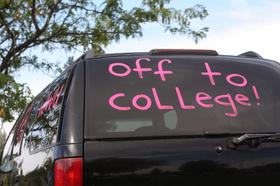- Heartland Community College provides access to higher education and excellence in teaching and learning. HCC graduates transfer to over 500 colleges and universities throughout the United States.
School Highlights
Heartland Community College serves 7,565 students (24% of students are full-time).
The college's student-teacher ratio of 21:1 is same as the state community college average of 21:1.
Minority enrollment is 37% of the student body (majority Black and Hispanic), which is less than the state average of 53%.
Quick Facts (2025-26)
- Enrollment: 7,565 students
- In-state tuition: $8,070
- Out-state tuition: $11,970
- Student-teacher ratio: 21:1
- Minority enrollment: 37%
- Source: Integrated Postsecondary Education Data System (IPEDS)
School Overview
The teacher population of 367 teachers has stayed relatively flat over five years.
Heartland Community College
(IL) Community College Avg.
Carnegie Classification
Associate's Colleges: High Transfer-High Nontraditional
Associate's Colleges: Mixed Transfer/Career & Technical-High Nontraditional
Institution Level
At least 2 but less than 4 years
At least 2 but less than 4 years
Institution Control
Public
Public
Total Faculty
367 staff
239 staff
School Calendar
Student Body
The student population of Heartland Community College has grown by 52% over five years.
The student-teacher ratio of 21:1 has increased from 12:1 over five years.
The Heartland Community College diversity score of 0.56 is less than the state average of 0.69. The school's diversity has grown by 15% over five years.
Total Enrollment
7,565 students
3,838 students
Student-Teacher Ratio
21:1
21:1
# Full-Time Students
1,814 students
1,091 students
# Part-Time Students
5,751 students
2,747 students
# Enrollment Undergraduate
756 students
328 students
# Full-Time Undergraduate Students
1,814 students
1,091 students
# Full-Time Graduate Students
n/a
43 students
# Part-Time Undergraduate Students
5,751 students
3,310 students
# Part-Time Graduate Students
n/a
18 students
Total Dormitory Capacity
n/a
132 students
% American Indian/Alaskan
n/a
n/a
% Asian
4%
6%
% Hispanic
12%
26%
% Black
12%
13%
% White
63%
47%
% Hawaiian
n/a
n/a
% Two or more races
6%
3%
% Non Resident races
1%
1%
% Unknown races
2%
4%
Diversity Score
0.56
0.69
College Completion Rate (Students who graduate in less than 4 years)
40%
40%
College Completion Rate (Students who graduate in 4 years or more than 4 years)
n/a
55%
Average Graduate Earnings (10 Years)
$30,700
$31,800
Tuition and Acceptance Rate
The public in-state tuition of $8,070 is more than the state average of $7,875. The in-state tuition has declined by 15% over four years.
The public out-state tuition of $11,970 is more than the state average of $10,847. The out-state tuition has declined by 15% over four years.
In-State Tuition Fees
$8,070
$7,875
Out-State Tuition Fees
$11,970
$10,847
% Students Receiving Some Financial Aid
61%
81%
Median Debt for Graduates
$7,610
$8,029
Median Debt for Dropouts
$5,250
$4,618
Acceptance Rate
n/a
89%
SAT Reading
n/a
390
SAT Math
n/a
360
SAT Writing
n/a
355
ACT Composite
n/a
17
ACT English
n/a
17
ACT Math
n/a
17
Source: 2024 (or latest year available) Integrated Postsecondary Education Data System (IPEDS)
Frequently Asked Questions
How much does Heartland Community College cost?
Heartland Community College's tuition is approximately $8,070 for In-State students and $11,970 for Out-State students.
What schools are Heartland Community College often compared to?
Heartland Community Collegeis often viewed alongside schools like Illinois Central College by visitors of our site.
Recent Articles

The Rise of Technical and Vocational Training in 2025
Explore the 2025 surge in technical and vocational training—enrollment, policy, costs, and why this path is gaining ground for students and parents.

Stackable Credentials: How Community Colleges Advance Careers
Discover how community colleges use stackable credentials to build career pathways, boost earnings, and enable lifelong learning in 2025.

High-Paying Jobs You Can Get with a Community College Degree
Discover top high-paying careers you can launch in 2025 with a community college (associate) degree and high-growth credentials in tech, healthcare and trades.











